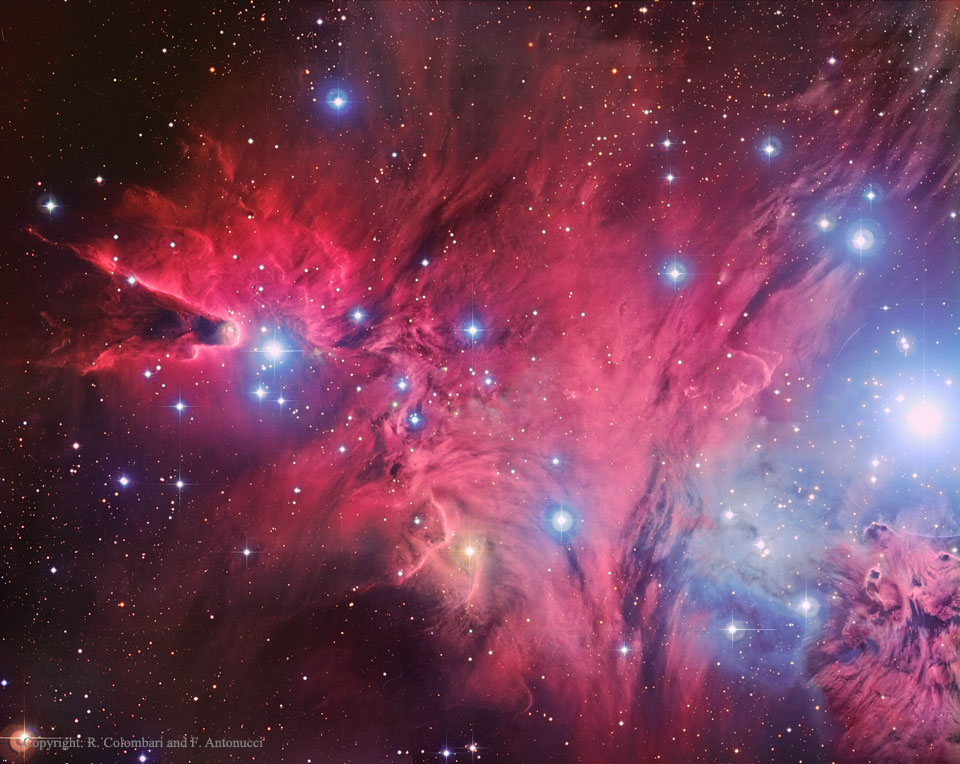 |
| Familiar things in Unicorn Image Credit & Copyright: R. Colombari & Francesco Antonucci Image NASA-APOD |
This happened to the ancient ones as it happens to us. Thanks to them we learn to connect bright points in night sky into constellations. Since they were defined by people with very different mental visions from ou common perceptions it takes a bit work to understand their logic. The Big Dipper is okay and the Lion looks like a mighty Sphinx. Swan has wings and flies always high up. Everybody recognizes Orion the great hunter with his dog. But why that square is Andromeda and why that big W on the sky is called Cassiopeia or those five stars plus Pegasus? A little study and visual aids calm our brains and we start to see also in less familiar groups of dots what the people in antiquity saw in them.
The beautiful image of the region of Unicorn, another constellation, is a good example of how modern astronomers follow the example of the ancient ones and let the brain suggest familiar shapes for seemingly random things. The method is, in fact, a very helpful memory aid and it is the key to mental mapping of the sky. Someone has seen the lights and shadows and coined a name for them. That is how others then conveniently call them letting astronomers to immediately understand what the other is talking about.
People have recognized shapes in the region visible in the photo and given them names. The Cone Nebula in the upper left corner really is a cone. The Christmas Tree cluster looks like a decorated fir tree with lights its base on the right and top near the cone. Doesn't it. Once you see it you remember it!
But what is that strange cloudy thing on the lower right corner of the image? Of course, it is the Fox Fur Nebula..Once one of Adam's children has named it that's what it is!
From these thoughts we can deduce that study of human perception, such as psychology, semiotics and various cognitive sciences, also have their place in Astronomy and Cosmology - after all, everything we see in the space is interpreted by that amazing organ between our ears which has its hard wired and creative ways of working also with randomly visual data.
No comments:
Post a Comment